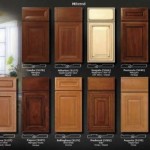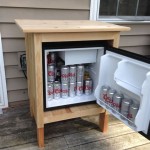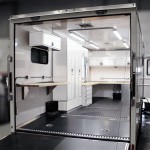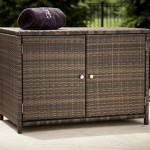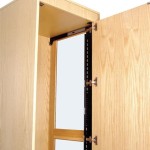The Benefits of Installing Cabinet Cooling Fans on PCs
Modern PCs, with their increasingly powerful processors and graphics cards, generate substantial heat during operation. Unmanaged heat can significantly impact performance, leading to throttling, instability, and even component damage. Installing cabinet cooling fans is a highly effective and readily accessible solution for managing heat within the PC chassis, promoting a cooler and more stable operating environment. This article examines the benefits of installing cabinet cooling fans on PCs.
Reduced System Temperatures
The primary function of cabinet cooling fans is to draw in cool air from the exterior environment and expel hot air from within the PC. This constant air circulation, driven by the rotation of the fans, effectively reduces the temperature of key components like the CPU, GPU, and motherboard. Lower temperatures translate to improved stability and performance, as these components are designed to operate within specific thermal limits. When these limits are exceeded due to excessive heat, the system may experience instability, crashes, or even component failure.
Enhanced System Stability and Performance
When a PC experiences overheating, it can lead to a phenomenon known as thermal throttling. This is a mechanism implemented by processors and graphics cards to protect themselves from damage. When the temperature reaches a critical threshold, the system automatically reduces the clock speed of these components, which in turn diminishes performance. This throttling can result in noticeable lag, stuttering, and frame rate drops, particularly during demanding tasks or gaming sessions.
By maintaining lower operating temperatures with cabinet cooling fans, users can prevent thermal throttling and ensure that components function optimally. This translates to a more responsive and stable computing experience, free from performance limitations imposed by excessive heat.
Extended Component Lifespan
Heat is a major contributor to component degradation over time. Excessive heat can shorten the lifespan of internal components, such as the CPU, GPU, and RAM. This is due to the accelerated wear and tear caused by elevated temperatures. Cabinet cooling fans effectively dissipate heat, mitigating the detrimental effects of high operating temperatures. By maintaining cooler operating temperatures, users can prolong the lifespan of their PC components, increasing the overall longevity and value of the system.
Improved System Noise Reduction
While cabinet cooling fans do introduce a level of noise to the system, they can actually contribute to noise reduction. By effectively cooling critical components, fans reduce the need for the components themselves to actively manage their own heat. This, in turn, reduces the noise generated by components such as the GPU, which can produce significant amounts of heat and fan noise.
Furthermore, users can select quiet fans with low RPM (revolutions per minute) ratings. These fans offer adequate cooling while minimizing their audible presence. Proper airflow management within the chassis also helps to minimize internal turbulence, further reducing overall system noise.
Considerations for Fan Installation
When installing cabinet cooling fans, users should consider factors such as the size of the chassis, the number of fans to install, and the airflow direction of each fan. It's important to ensure proper airflow, with fans positioned to create a balanced and efficient system. For instance, installing intake fans at the front of the chassis to draw in cool air, and exhaust fans at the rear to expel hot air.
Additionally, users should choose fans that are compatible with the motherboard and have the appropriate connectors. It's also important to select fans with a suitable RPM rating to balance cooling effectiveness and noise levels.
Installing cabinet cooling fans is a relatively straightforward process that requires a basic understanding of PC components and a few tools. Many fan installation tutorials are available online, providing users with step-by-step instructions.
Cabinet cooling fans offer a simple yet effective solution for managing heat within a PC chassis. By promoting a cooler operating environment, they contribute to enhanced stability, performance, and component longevity. Users can improve their overall computing experience by incorporating cabinet cooling fans into their system.

Electronic Cabinet Cooling Fans For Prevent Overheating Sofasco

How To Manage Your Pc S Fans For Optimal Airflow And Cooling

How To Manage Your Pc S Fans For Optimal Airflow And Cooling

How To Manage Your Pc S Fans For Optimal Airflow And Cooling

Pc Cooling How To Set Up Computer Case Fans Sofasco

How To Manage Your Pc S Fans For Optimal Airflow And Cooling

Pc Airflow Guide How To Strategically Set Up Your Case Fans

How To Install Ant Esports Octaflow Argb Fan On Pc Best Budget Rgb Fans For Desktop

What Are The Advantages Of Using Cpu Coolers Coolerguys

Computer Cooling Wikipedia
Related Posts


